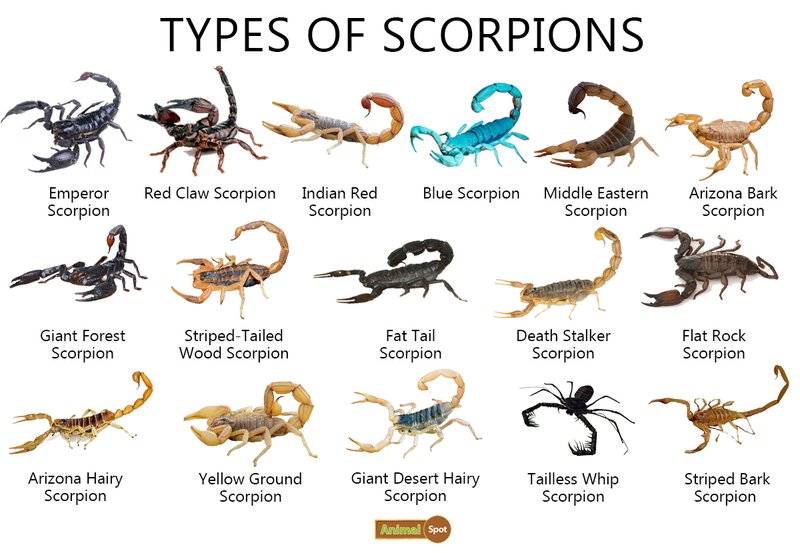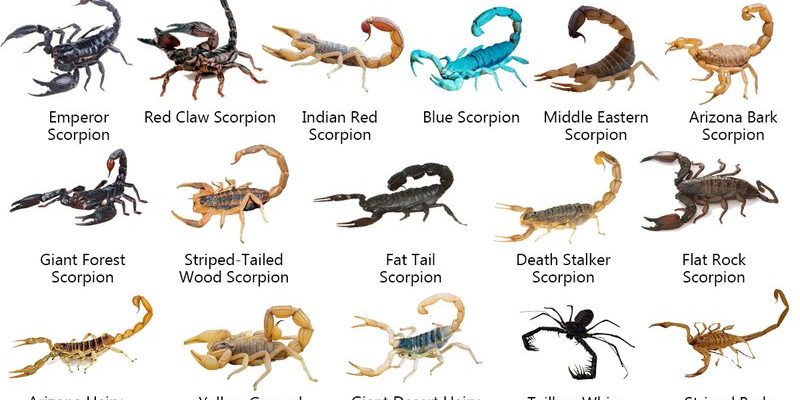
Imagine a bustling rainforest, full of vibrant life and lush greenery. That’s where the Asian Forest Scorpion thrives, and it’s a bit different from the ones you might find in arid environments. The key is in its habitat, diet, and even its behavior. By exploring these differences, we can appreciate not just the Asian Forest Scorpion, but the wide variety of scorpions that call our planet home.
What is the Asian Forest Scorpion?
The Asian Forest Scorpion, scientifically known as *Heterometrus spinifer*, is a large, robust species native to the tropical and subtropical forests of Southeast Asia. They can grow up to 8 inches long, making them one of the larger scorpion species. Unlike the spindly scorpions you might see in movies, this one has a muscular body and thick pincers. You might say it looks like a little tank of the scorpion world!
These scorpions are nocturnal, meaning they are most active at night. During the day, they hide under logs, rocks, or leaf litter, staying out of sight from predators. They have a unique way of thriving in their environment, using their powerful pincers to catch prey and defend themselves.
The Habitat: Rainforest vs. Desert
One of the most significant differences between the Asian Forest Scorpion and other species lies in their habitats. As mentioned, the Asian Forest Scorpion lives in humid, tropical rainforests. This environment provides ample moisture and shade, crucial for its survival.
In contrast, many other scorpion species, like the notorious *Centruroides sculpturatus*, are adapted to arid deserts. These scorpions have developed features like smaller bodies and reduced moisture needs to survive in harsh conditions. Think of it like having a houseplant that thrives in sunlight versus one that prefers dim light — both are beautiful but require different care to flourish.
Diet and Hunting Behavior
The diet of the Asian Forest Scorpion is another area where it differs from other scorpions. It primarily feeds on insects like crickets, roaches, and even spiders. With its strong pincers, it can capture and subdue prey quickly. Unlike some scorpions that simply wait for their food to come by, the Asian Forest Scorpion is quite active when hunting.
On the flip side, many desert species have adapted to eat what’s available in their harsh environments. This often includes smaller insects, but they may also go for small mammals or reptiles when the opportunity arises. Ultimately, their hunting tactics can vary widely. Some are aggressive hunters, while others are more ambush predators. It’s all about adapting to their environment and available food sources.
Venom: How Dangerous is the Asian Forest Scorpion?
When it comes to venom, the Asian Forest Scorpion is generally considered less dangerous than some of its desert-dwelling cousins. Its venom is primarily used to subdue prey rather than for defense against larger predators like humans. Although its sting can be painful — comparable to a bee sting — it’s not lethal to humans.
In contrast, many species found in harsher environments have potent venom that can be quite dangerous. For example, the *Androctonus australis*, known as the fat-tailed scorpion, boasts one of the most toxic venoms in the world. This venom not only helps it catch prey but also deters larger predators effectively.
Behavior and Social Structure
Let’s talk about behavior. The Asian Forest Scorpion is known for its intriguing social structure. They can often be found in groups, especially during the juvenile stage. This social behavior is somewhat unique among scorpions, as many other species are solitary and territorial.
In contrast, scorpions like the *Paravaejovis spinigerus* display a more solitary lifestyle. They defend their territories fiercely and rarely come together unless it’s mating season. It’s akin to different styles of living: some prefer community living with friends, while others thrive in their own space.
Conservation Status
Understanding the conservation status of the Asian Forest Scorpion is crucial, especially as forests continue to face threats from deforestation and habitat loss. Currently, they are not considered endangered, but their habitat is at risk. Many scorpion species are facing declining populations due to environmental changes and human activities.
Comparatively, some desert species may also suffer, but the challenges they face can vary. The desert scorpions often deal with climate change and urbanization, which can impact their populations significantly. Conservation efforts for both environments are vital to maintaining biodiversity.
Final Thoughts: Why Knowing the Differences Matters
Understanding the differences between the Asian Forest Scorpion and other species adds to our appreciation of these fascinating creatures. Each species has its own unique adaptations, strengths, and challenges. Whether they thrive in a damp rainforest or a dry desert, scorpions are essential players in their ecosystems.
So next time you think about scorpions, remember that there’s a lot more to them than meets the eye. From their diverse habitats to their varied hunting techniques, each type has stories to tell and lessons to share. If you ever get the opportunity to observe one in the wild (safely, of course!), take a moment to appreciate how incredible these creatures are!

